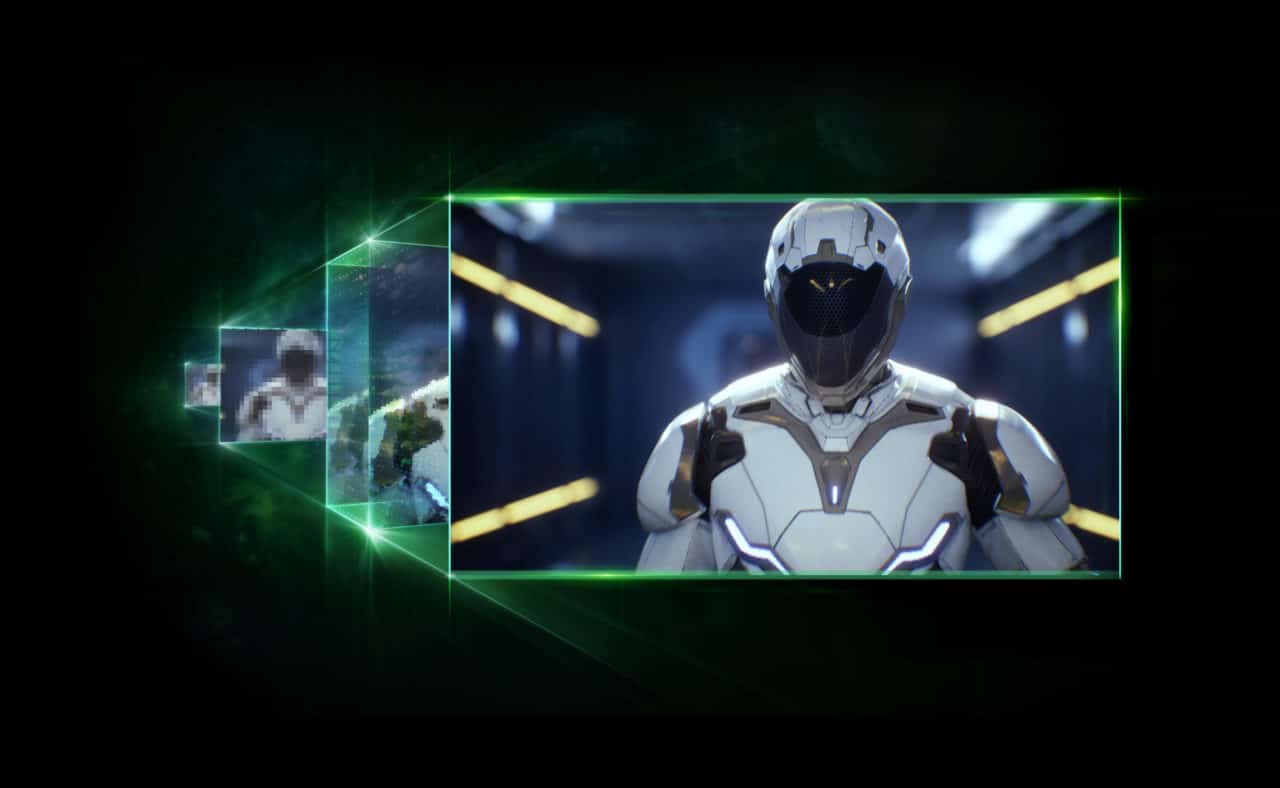From in-game physics to animation simulation to AI-assisted broadcasting, artificial intelligence is revolutionizing gaming.
DLSS 2.0, releasing this week in Control and MechWarrior 5: Mercenaries, represents another major advance for AI in gaming.
DLSS 2.0 — A Big Leap in AI Rendering
Powered by dedicated AI processors on GeForce RTX GPUs called Tensor Cores, DLSS 2.0 is an improved deep learning neural network that boosts frame rates while generating beautiful game images.
It gives gamers the performance headroom to maximize ray tracing settings and increase output resolutions.
DLSS 2.0 offers several key enhancements over the original version:
- Superior Image Quality — DLSS 2.0 offers image quality comparable to native resolution while only having to render one quarter to one half of the pixels. It employs new temporal feedback techniques for sharper image details and improved stability from frame to frame.
- Great Scaling Across All RTX GPUs and Resolutions — a new AI model more efficiently uses Tensor Cores to execute 2x faster than the original, improving frame rates and removing restrictions on supported GPUs, settings and resolutions.
- One Network for All Games —The original DLSS required training the AI network for each new game. DLSS 2.0 trains using non-game-specific content, delivering a generalized network that works across games. This means faster game integrations, and ultimately more DLSS games.
- Customizable Options — DLSS 2.0 offers users three image quality modes (Quality, Balanced and Performance) that control render resolution, with Performance mode now enabling up to a 4x super resolution. (i.e. 1080p → 4K). This means more user choice, and even bigger performance boosts.
In addition to Control and MechWarrior 5, DLSS 2.0 has delivered big performance boosts to Deliver Us The Moon and Wolfenstein: Youngblood.
DLSS 2.0 is now also available to Unreal Engine 4 developers through the DLSS Developer Program that will accelerate deployment in one of the world’s most popular game engines.
RTX Momentum Builds Across the Ecosystem
DLSS is one of several major graphics innovations, including ray tracing and variable rate shading, introduced in 2018 with the launch of our NVIDIA RTX GPUs.
Since then, about 15 million NVIDIA RTX GPUs have been sold. More than 30 major games have been released or announced with ray tracing or NVIDIA DLSS powered by NVIDIA RTX. And ray tracing has been adopted by all major APIs and game engines.
That momentum continues with Microsoft’s announcement last week of DirectX 12 Ultimate, as well as NVIDIA RTX Global Illumination SDK, new tool support for the Vulkan graphics API, and new Photoshop texture tool plugins.
DirectX 12 Ultimate
Last week, Microsoft unveiled DirectX 12 Ultimate, the latest version of the widely used DirectX graphics standard.
DirectX 12 Ultimate codifies NVIDIA RTX’s innovative technologies, including ray tracing, variable rate shading, mesh shading, and texture space shading, as the standard for multi-platform, next-gen games.
Game developers can take full advantage of all these technologies knowing they’ll be compatible with PCs equipped with NVIDIA RTX GPUs and Microsoft’s upcoming Xbox Series X console.
RTX Global Illumination SDK
The NVIDIA RTX Global Illumination SDK, released Monday, gives developers a scalable solution to implement beautiful, ray-traced indirect lighting in games while still achieving performance targets.
The RTX GI SDK is supported on any DirectX raytracing-enabled GPU. It’s an ideal starting point to bring the benefits of ray tracing to more games.
Vulkan Game Developers Get New Tools
NVIDIA also Monday added support for the Vulkan graphics API to two of its most popular game development tools.
Nsight Aftermath, which provides precise information on where GPU crashes occur and why, is now available for the first time for Vulkan.
NVIDIA will also provide Vulkan developers with GPU Trace, a low-level profiler in Nsight Graphics that provides hardware unit metrics and precise timing information
NVIDIA Texture Tools Exporter
The NVIDIA Texture Tools Exporter allows users to create highly compressed texture files that stay small on disk and in memory.
It allows game and app developers to use higher quality textures in their applications, and provides users a smaller, faster, download size.
It’s available as a standalone tool or as an Adobe Photoshop plug-in for game developers and texture artists.
More Advancements for Gamers
Add it all up: DLSS 2.0, support for RTX technologies with DirectX 12 Ultimate, the introduction of the NVIDIA RTX Global Illumination SDK, support for the Vulkan graphics API in more NVIDIA developer tools, as well as more texture tools. The result is more advancements in the hands of more gamers, developers, and creators than ever before.
